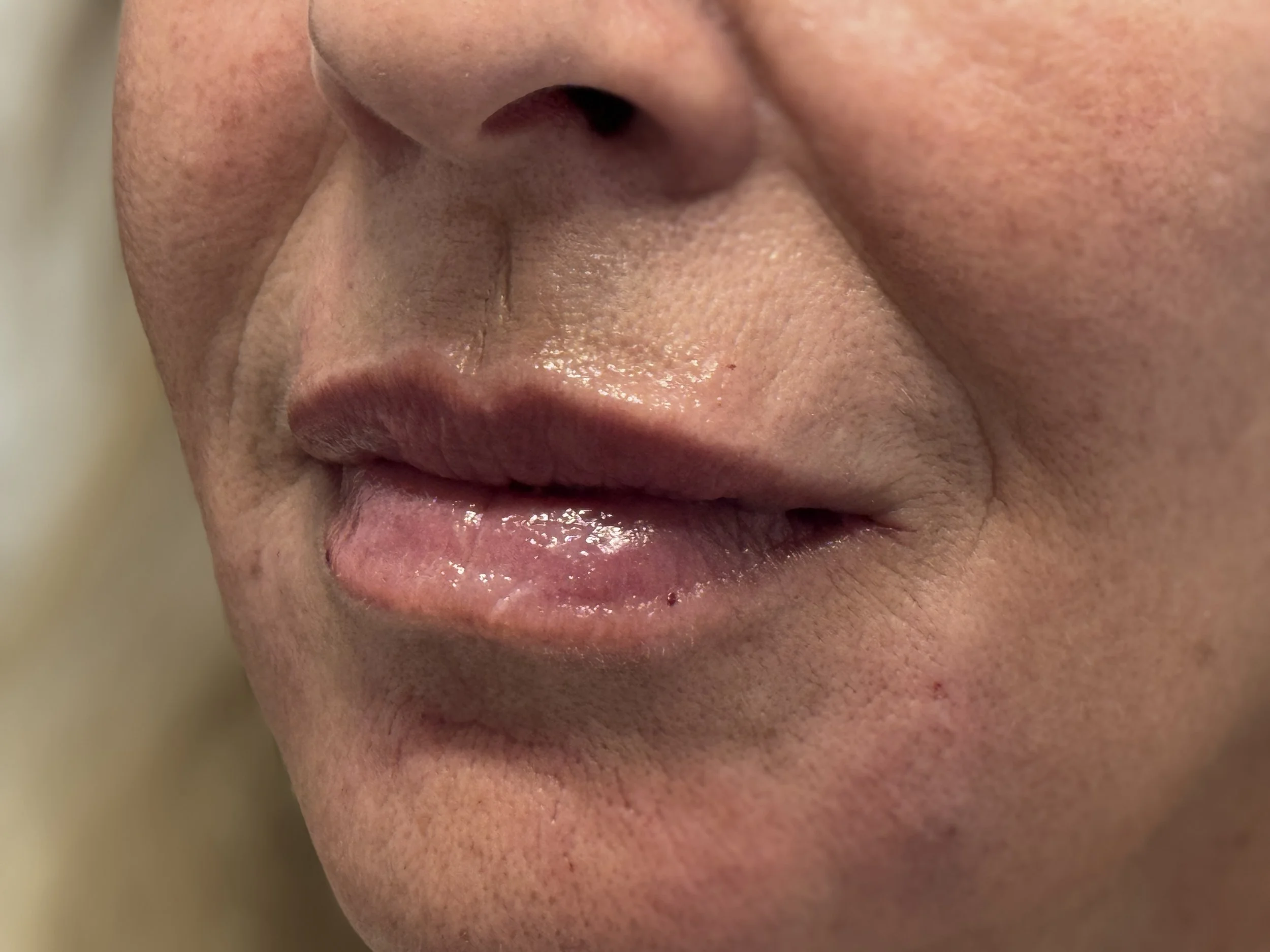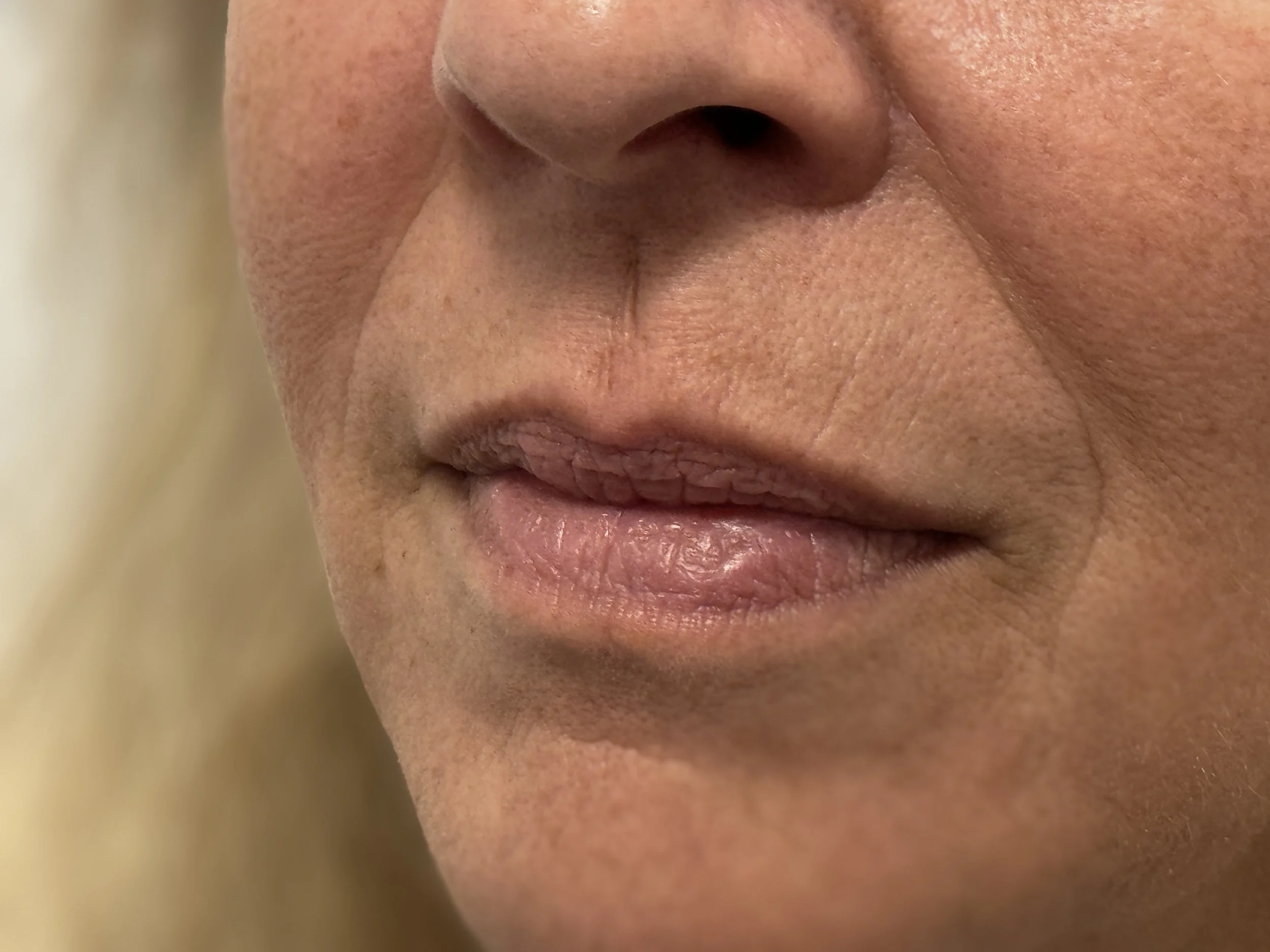Fillers
Facial aging is a complex, multifactorial process that involves gradual changes in the skin, fat, muscle, and bone. As we age, the skin loses collagen and elastin, resulting in reduced elasticity, fine lines, wrinkles, and sagging. At the same time, facial fat volume decreases in key areas. In addition, fat pads may descend and accumulate in the lower face, contributing to jowling and a loss of facial definition. Bone resorption in areas like the jaw and orbital rim further alters the facial structure, deepening the visible signs of aging.
How Fillers Can Help
Fortunately, many of these age-related changes can be addressed non-surgically using hyaluronic acid (HA) dermal fillers. These fillers can restore lost volume, improve facial contours, smooth out shadows and hollows, and enhance overall symmetry. When placed carefully and strategically, HA fillers offer natural-looking rejuvenation with little to no downtime.
Making Your First Appointment
New to filler? No problem!
We love welcoming first-time patients and take pride in creating a supportive, informative experience. Whether you’re curious or committed, we take the time to walk you through the process, answer all your questions, and make sure you feel confident and comfortable every step of the way.
Before scheduling your consultation, please take a moment to review the information below to ensure that HA filler treatment is right for you.
Before
After
About Fillers
-
Hyaluronic acid (HA) dermal fillers are injectable treatments composed of a clear gel form of HA—a substance naturally found in the body that helps maintain skin hydration and volume. Modern formulations are non-animal derived and stabilized through minimal crosslinking, making them both biocompatible and FDA-approved for cosmetic use.
Common Uses of HA Fillers:
Smoothing fine lines and wrinkles
Restoring volume to the cheeks, temples, under-eyes, and jawline
Enhancing facial features, such as:
Plumping and shaping the lips
Defining cheekbones
Improving chin projection
Balancing asymmetries and refining overall facial harmony
These treatments are tailored to individual needs, providing subtle or more transformative results based on patient goals and facial anatomy.
-
A dermal filler appointment typically takes 30–60 minutes, depending on the number of areas being treated. The process begins with a consultation to assess your facial anatomy, aesthetic goals, and suitability for treatment. Your provider will create a customized treatment plan tailored to your needs.
Steps of the Procedure:
Cleansing & Preparation: The treatment area is cleansed, and a topical numbing cream may be applied to minimize discomfort.
Precise Injections: The filler is injected using fine needles or cannulas, depending on the area and desired result.
Shaping & Massage: The practitioner may gently massage the area to ensure smooth, even distribution of the filler.
Post-Treatment Care: You’ll receive aftercare instructions, which typically include avoiding strenuous activity, alcohol, and excessive sun or heat for 24–48 hours.
Most patients experience minimal downtime and can return to normal activities the next day.
-
HA fillers are widely considered safe and well-tolerated when administered by a trained, experienced medical professional. Since hyaluronic acid occurs naturally in the body, the risk of allergic reactions is low. Additionally, HA fillers can be reversed with hyaluronidase, an enzyme that dissolves the filler if needed.
How Long Do Filler Results Last?
The longevity of dermal filler results can vary depending on several factors, including:
The type of filler used
The treatment area
Your individual metabolism and lifestyle factors
In general, filler results can last anywhere from 6 to 18 months, with some areas and products offering even longer-lasting effects.
We will discuss what to expect in terms of longevity based on your unique treatment plan during your initial consultation. At that time, we’ll also review maintenance options to help you achieve and sustain your desired results over time.
-
Pregnancy and Breastfeeding: Dermal fillers are generally avoided during pregnancy and breastfeeding due to potential risks to the fetus or infant.
Active Skin Infections: Conditions like cold sores, acne, or dermatitis in the treatment area need to be addressed before considering fillers.
Allergies: Individuals with known allergies to filler ingredients or lidocaine (often used in fillers) should avoid them.
Autoimmune Diseases: Conditions like lupus or rheumatoid arthritis can affect how the body reacts to fillers, making it risky for some individuals.
Bleeding Disorders: Those with bleeding disorders or taking blood-thinning medications are at higher risk of bruising and bleeding.
Uncontrolled Diabetes: Poorly managed blood sugar levels can complicate the healing process.
Using nicotine products—such as cigarettes, vapes, or smokeless tobacco—can negatively affect your results and recovery after dermal filler treatment: delayed healing and increased swelling, increased risk of infection and reduced longevity of filler


